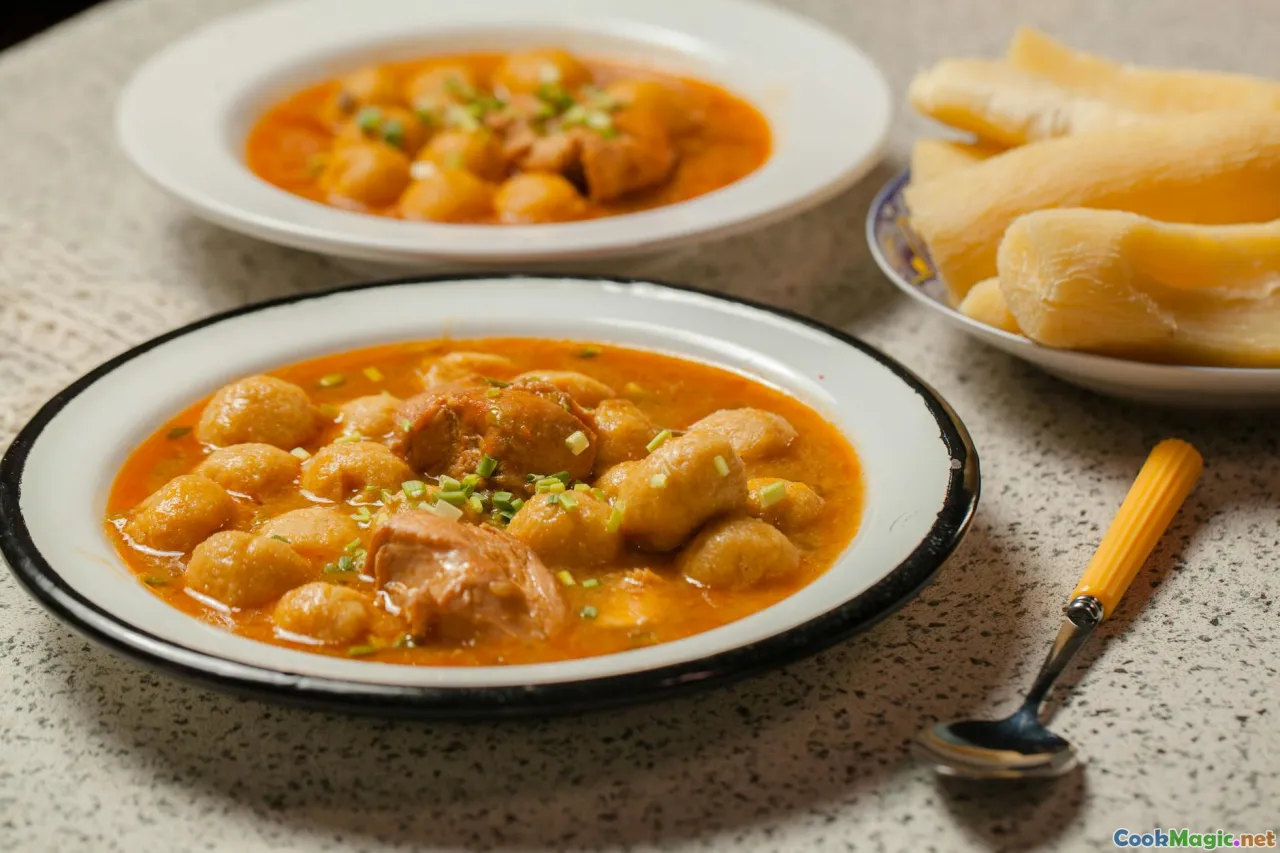Understanding Colombian Ajiaco and Its Origins
7 min read Discover the rich history, cultural significance, and sensory experience of Colombian Ajiaco—a hearty, flavorful stew rooted in history and tradition. May 01, 2025 19:55
Understanding Colombian Ajiaco and Its Origins
Imagine a steaming bowl of comfort—a thick, aromatic stew that whispers stories of mountains, plains, and vibrant cultural tapestries. This is Ajiaco, a quintessential Colombian dish that embodies the heart and soul of the nation's culinary heritage. Its fragrant broth, tender chicken, and a medley of native potatoes create a symphony of flavors that have been perfected over centuries.
The Warm Welcome of Ajiaco: A Colombian Tradition
Ajiaco is more than just a dish; it's a celebration of Colombia’s diverse geography and history. Often enjoyed as a communal meal, especially during cooler months or family gatherings, Ajiaco invites sharing and storytelling, forging bonds over a bowl of warmth.
The very word “Ajiaco” evokes images of bustling markets and cozy kitchens, where the aroma of herbs and simmering stock fills the air. This dish is a testament to the Colombian people's ability to turn humble ingredients into a culinary masterpiece.
A Sensory Journey: What Makes Ajiaco Special?
Picture this: a steaming, slightly thick broth laden with shredded chicken, tender potatoes that melt in your mouth, and the bright, herbaceous punch of guasca(a Colombian herb similar to oregano). Served with a side of corn on the cob, avocado slices, capers, and a dollop ofsour cream, every spoonful is a sensory celebration.
The aroma alone is intoxicating—rich, herbal, and inviting—immediately conjuring images of mountain villages and lively street stalls. The texture is hearty yet delicate, with the potatoes providing a velvety thickness and the chicken adding savory depth.
The Roots and Evolution of Ajiaco
Historical Origins
Ajiaco’s roots stretch back to indigenous communities long before Spanish colonization. Native peoples of the Andes and the Colombian highlands cultivated native potatoes, which form the backbone of the dish. The use of herbs like guascaandeje (a local herb) highlights the indigenous contribution.
When Spanish settlers arrived, they brought new ingredients—chicken, corn, and various herbs—that blended seamlessly with native staples. Over time, Ajiaco evolved, absorbing influences from African, Spanish, and indigenous culinary traditions, creating a layered, multicultural dish.
Regional Variations
While Bogotá’s version of Ajiaco is most famous—characterized by its thick, hearty broth and specific potato varieties—other regions add their unique touches. In the Caribbean coastal areas, for instance, the dish might incorporate different herbs or be served with a splash of local lime juice.
In the Andean highlands, Ajiaco is often cooked with extra vegetables and served alongside traditional arepas or empanadas, reflecting the region’s agricultural bounty.
The Art of Making Ajiaco
Crafting authentic Ajiaco is an art that combines patience, intuition, and respect for tradition.
Key Ingredients
- Chicken: Usually bone-in, skinless chicken breasts or thighs for flavor.
- Potatoes: Three types—Papa criolla(small, yellow, and waxy),papa sabanera(large, starchy), andpapa pastusa (creamy)—each contributing different textures.
- Herbs: Guascaandeje provide distinctive aroma and flavor.
- Corn: Fresh ears of corn on the cob.
- Additional ingredients: Capers, sour cream, avocado, and sometimes a splash of aguardiente (a local spirit) for a celebratory touch.
The Cooking Process
- Prepare the broth: Start by boiling the chicken with herbs and salt, creating a flavorful base.
- Add the potatoes: Introduce the different potato varieties at different stages, allowing each to cook to perfection—crisp, tender, and velvety.
- Finish with corn: Add corn ears during the last phase, so they retain some texture.
- Serve with accompaniments: Ladle the hot stew into bowls and serve with sliced avocado, capers, sour cream, and lime.
This process, though seemingly simple, requires careful timing to achieve the perfect consistency—a thick, hearty broth with potatoes that almost dissolve into the soup.
Cultural Significance and Personal Reflections
In Colombia, Ajiaco is more than a dish; it’s a reflection of resilience and community. I remember my first encounter with Ajiaco during a trip to Bogotá. Sitting in a bustling local restaurant, I was struck by the warmth of the host’s hospitality and the dish’s inviting aroma.
The first spoonful was a revelation—rich, savory, with a hint of herbal freshness that awakened my senses. Sharing this meal with locals, I felt an unspoken connection—a glimpse into Colombia’s soul.
For Colombians, Ajiaco is synonymous with family, tradition, and the comfort of home. It’s a dish that transcends social boundaries, uniting people over a simple yet profound bowl.
Celebrating Ajiaco Today
Today, Ajiaco continues to evolve, embraced by chefs worldwide who seek to honor its roots while adding their creative touches. Modern twists include adding local cheeses, experimenting with different herbs, or serving it in contemporary presentation styles.
Yet, at its core, Ajiaco remains a testament to Colombia’s rich cultural mosaic—a dish born from indigenous ingenuity, colonial influences, and the enduring spirit of its people.
Conclusion
Understanding Ajiaco is to understand Colombia itself—a land of contrasts, traditions, and vibrant life. It’s a dish that tells stories of mountains and valleys, of shared meals and communal joy. Whether you’re savoring it in a humble street stall or a refined restaurant, Ajiaco offers a taste of Colombia’s heart—a hearty, soulful, and unforgettable experience.
So next time you find yourself craving comfort food, remember the story behind Ajiaco and let its warmth and history envelop you in a truly Colombian embrace.









